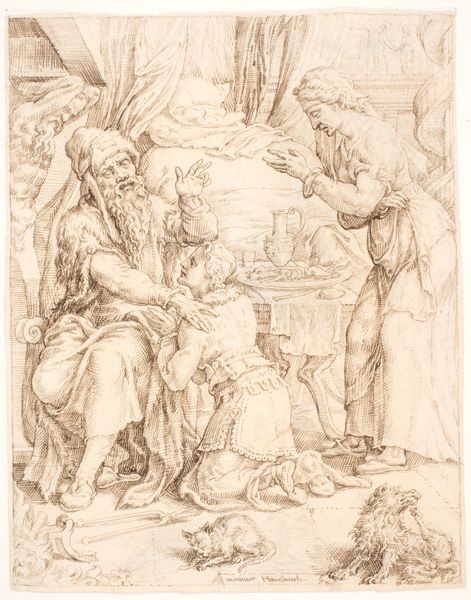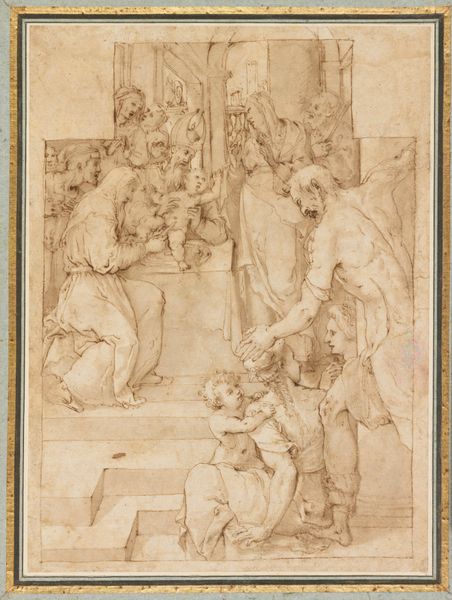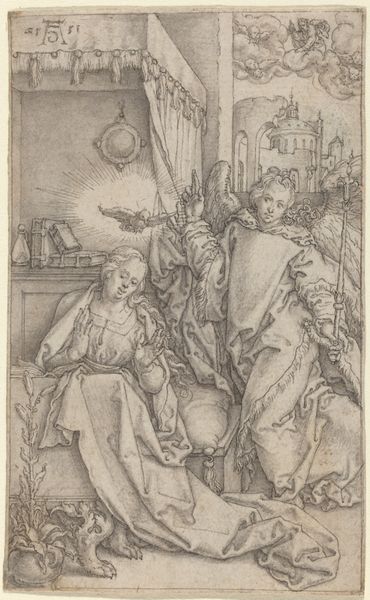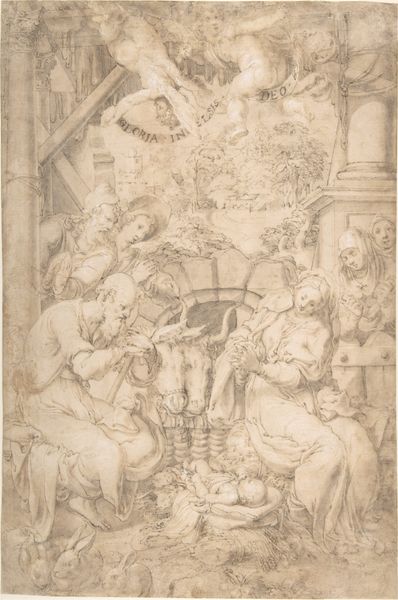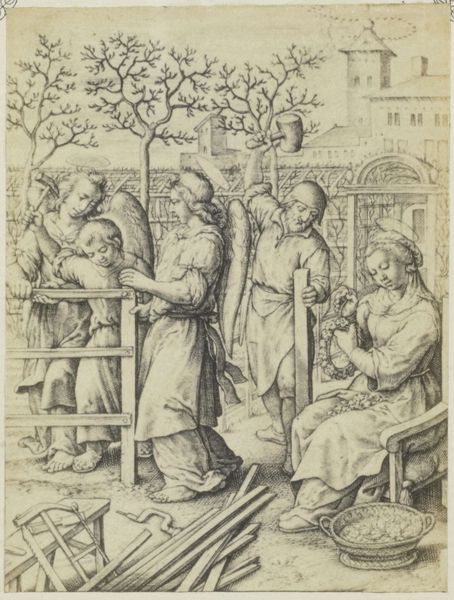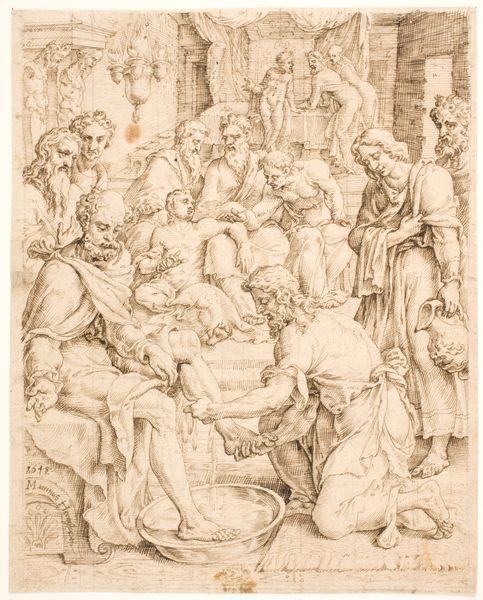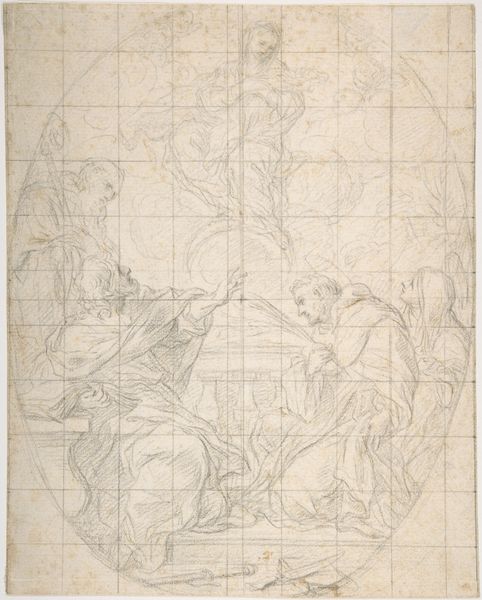
drawing, pen
#
drawing
#
narrative-art
#
pencil sketch
#
landscape
#
figuration
#
coloured pencil
#
pen
#
italian-renaissance
Copyright: Public Domain
Curator: Editor: This drawing, “Christus und die Samariterin” by Agnolo Bronzino, dates back to the late 16th century. It's rendered with pen and pencil, creating a subdued, almost dreamlike effect. I’m curious about the everyday nature of it; the figures are so detailed, and their clothes, particularly the woman's layered skirt, look like something someone labored over for ages. What is your interpretation? Curator: Look at the raw materials first – the paper itself, the ink, the pencils used. The value isn't inherent but socially produced. Bronzino acquired these materials; how does the availability of these tools influence his artistic process? Also, consider the social hierarchy: who had access to this level of artistic material, and what kind of patron would have commissioned it? Is it preparatory or autonomous, and what does that imply about the labor involved in creating it? Editor: So you are focusing on the 'making of' rather than the religious subject of the artwork itself? Curator: Precisely. The subject provides a narrative but obscures the production and reception. Consider the act of drawing itself as a skilled trade. How does Bronzino elevate the status of this skill, moving it from craft to "high art," and at whose expense? Editor: That makes me look at the figures differently, more as carefully constructed images laboriously constructed. Curator: Exactly. Also, think of the viewer's engagement. What class or type of person in the 16th century would have appreciated this drawing? How would that impact their interpretation, their perception of its value? Editor: It's interesting to think of the art materials as part of this bigger, material picture of value and skill in the Renaissance. Curator: Indeed, seeing the raw components of this work reveals not just skill but illuminates art production in its socioeconomic context.
Comments
No comments
Be the first to comment and join the conversation on the ultimate creative platform.
